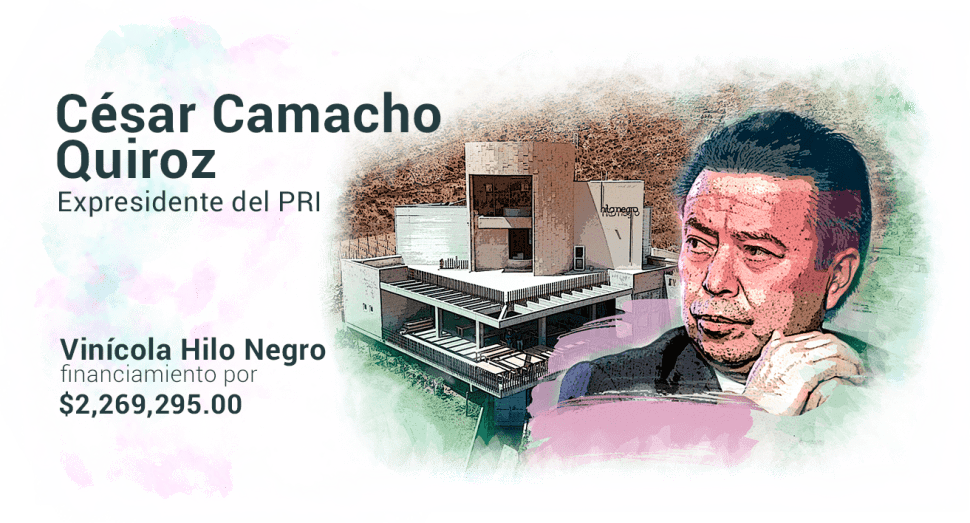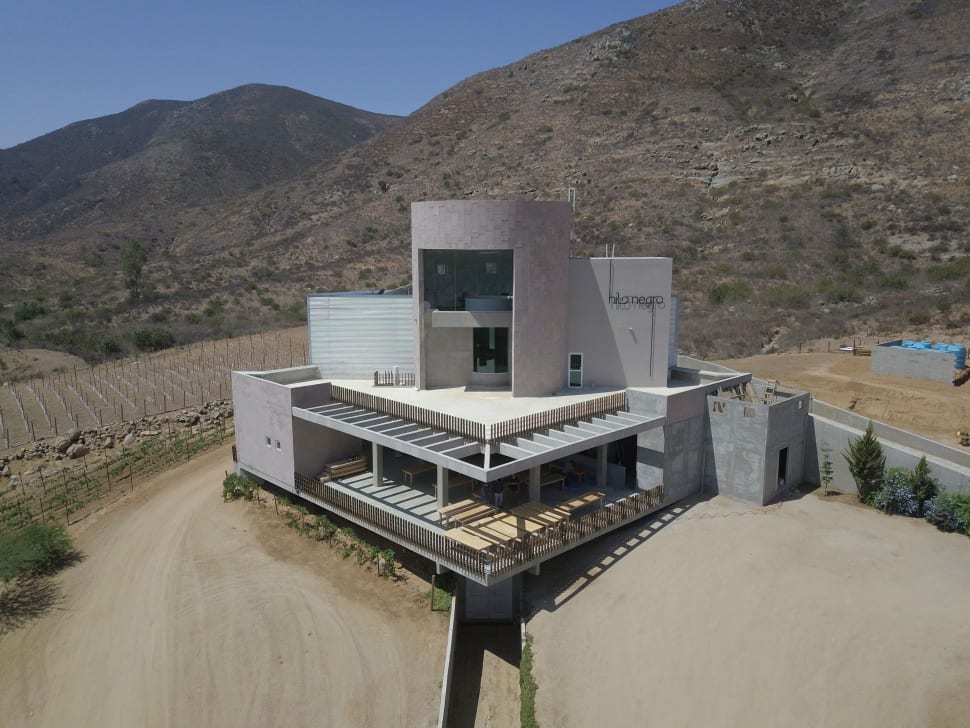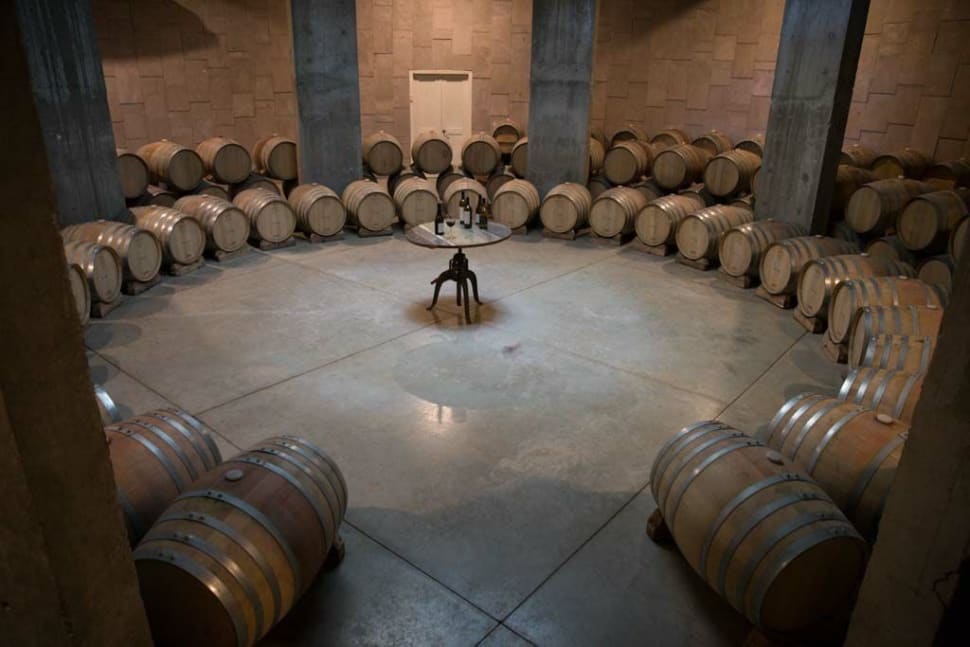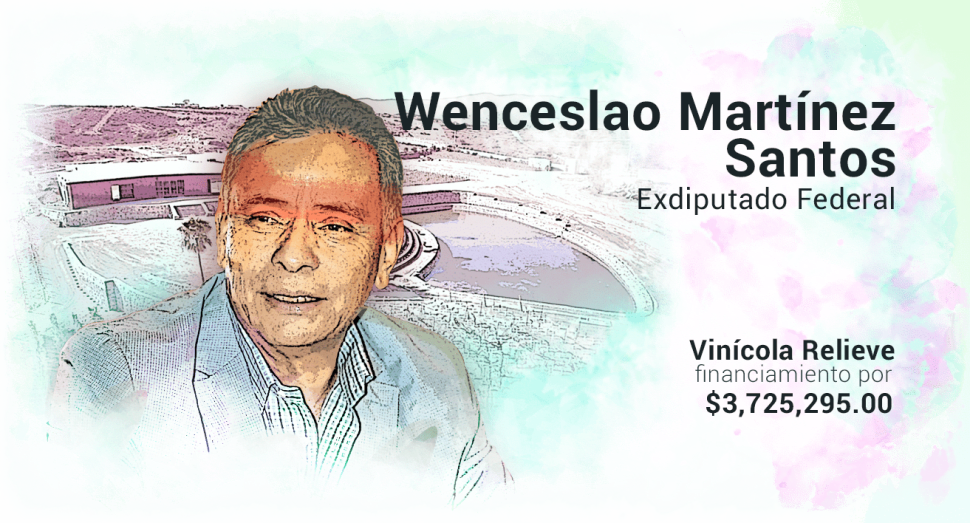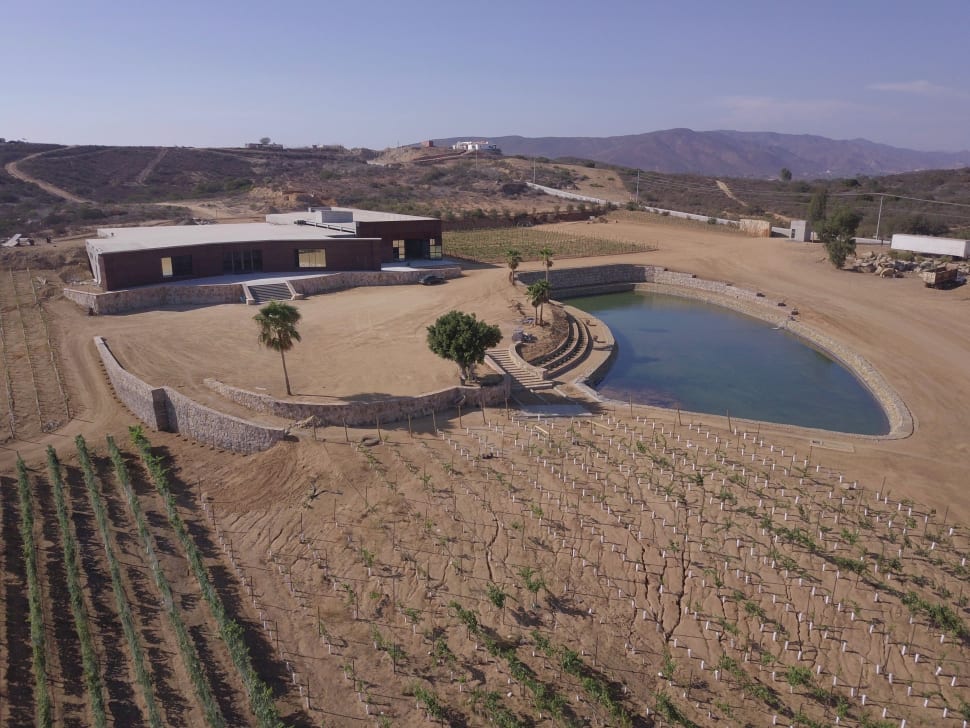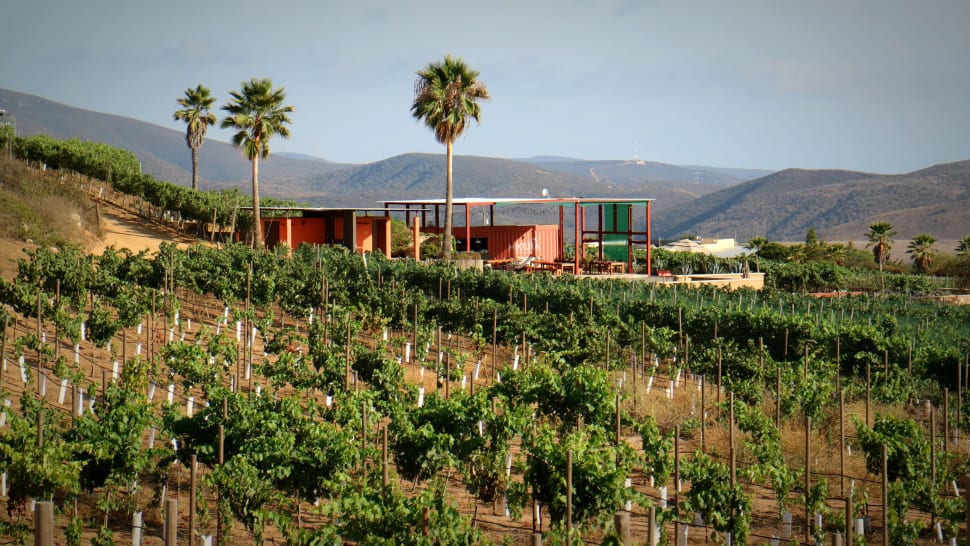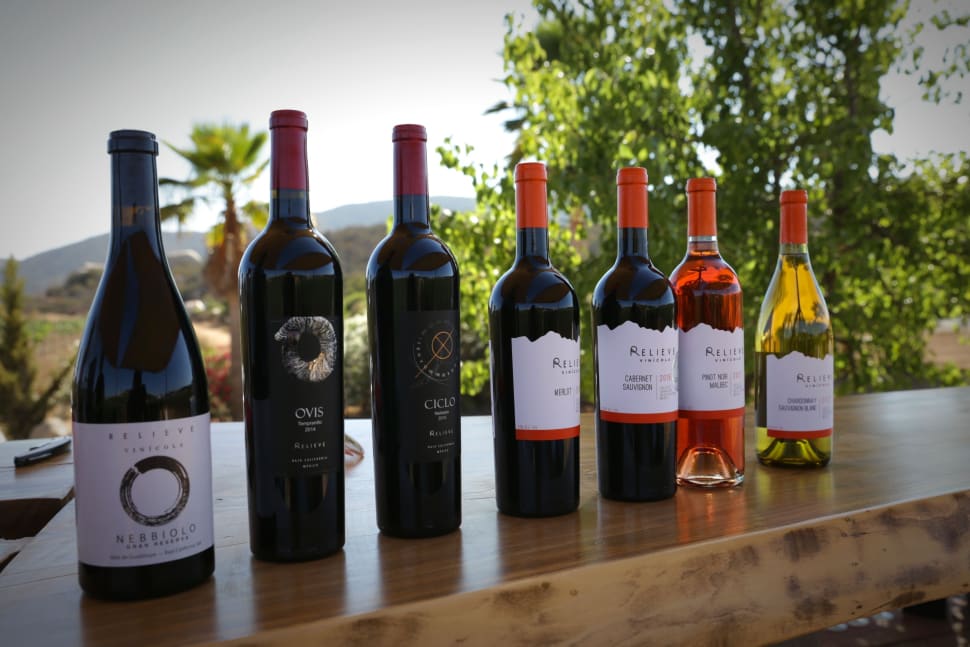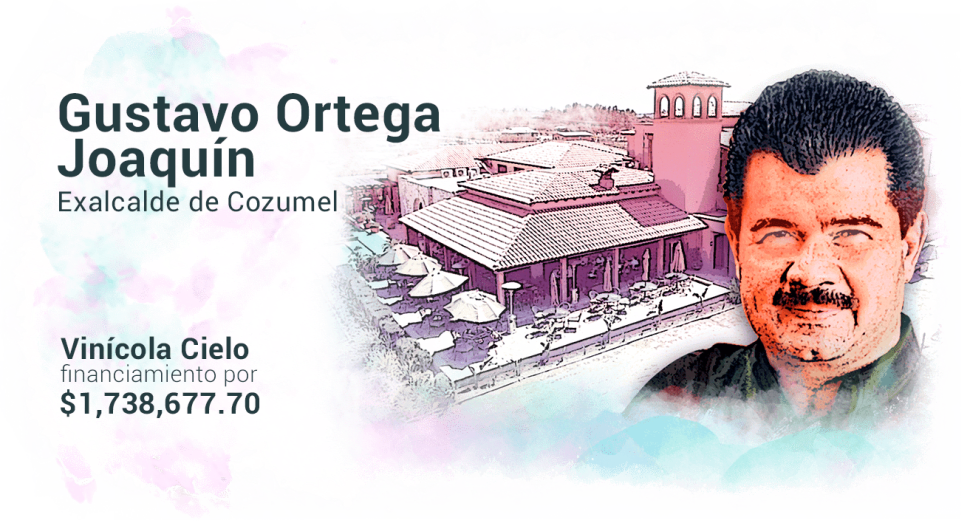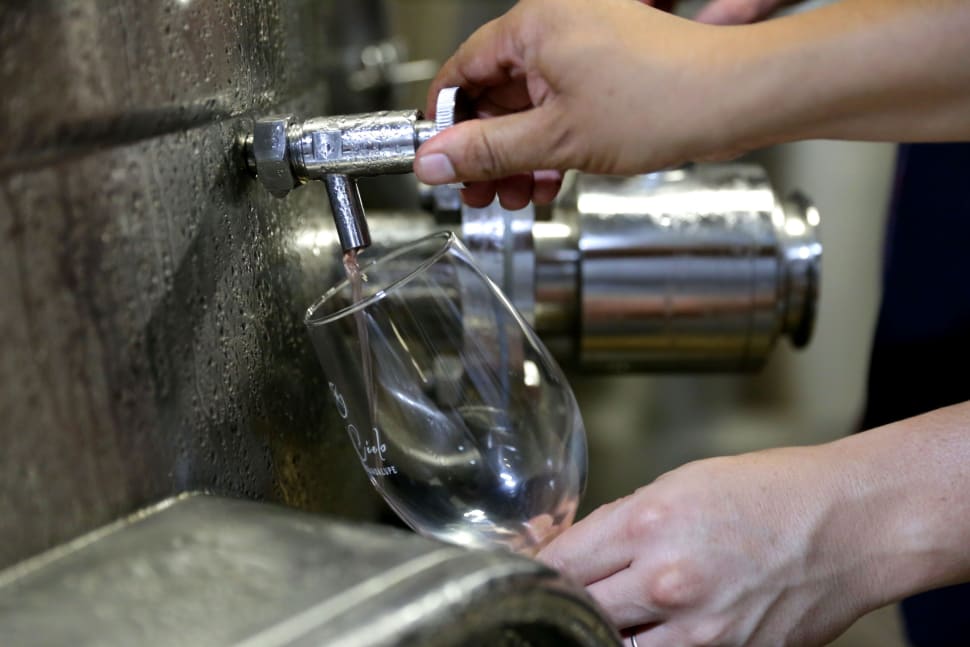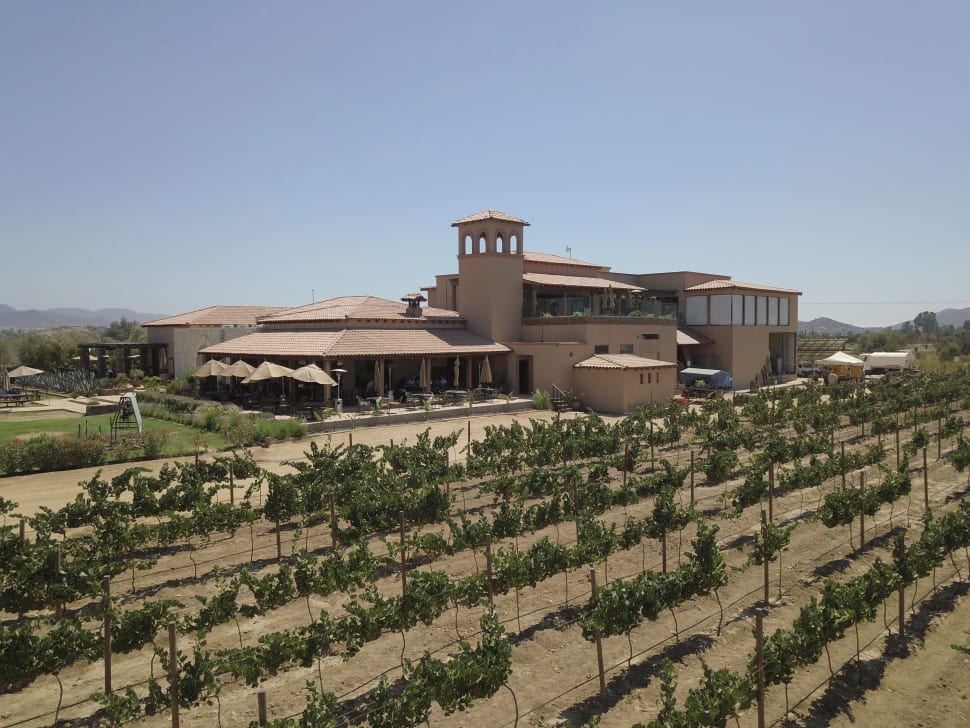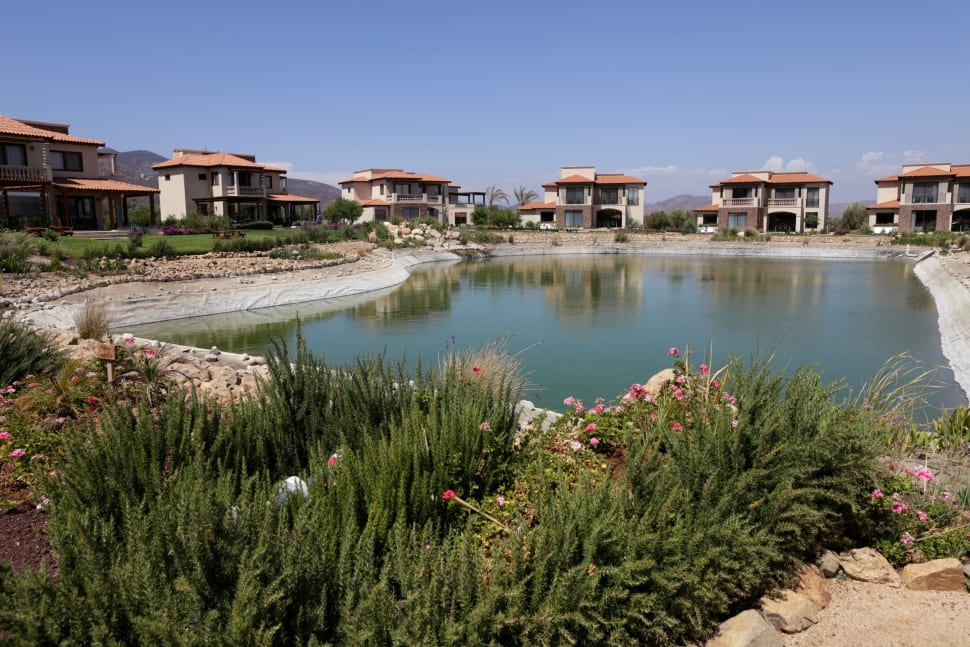Without knowing it, Mexicans have invested 7.73 million pesos of our taxes in the construction and equipment of winemakers of high-level politicians, in the Valley of Guadalupe.
Hidden between arid and rocky mountains of Baja California, is the Valle de Guadalupe, the main wine region of Mexico, home to more than 70 wineries that produce 90 percent of the wine country.
Located in the municipality of Ensenada, this area has become a kind of Mexican paradise for winemakers, gourmets and innovative entrepreneurs, who work together to boost the industry and raise the quality of their products, while working to protect the ecosystem and the tourist development of the region.
They have also come together to make Mexican wine at its best, but it has been a struggle for years against challenges such as paying taxes above 46%, leaving it at a disadvantage compared to imported wine.
The bad news of the wine boom, and the tourist activity that generates more than a million visits a year is that this promised land is not being saved from corruption.
Some of the wine companies hide secrets: they belong to Mexican politicians and were built or equipped with public resources from the Ministry of Agriculture, Livestock, Rural Development, Fisheries and Food (Sagarpa) and the Ministry of Economy, designed to boost the agricultural sector and to national entrepreneurs.
This situation disadvantages producers far from the government circles that administer federal resources. For the Baja California wine grower, Jaime Palafox, it is very difficult to access the public funds of the Sagarpa, as there are no clear or transparent mechanisms to request them.
“They are public resources, they require transparency and they are exercised correctly, otherwise there is a waste,” said Palafox, members of one of the families with the greatest oenological tradition in the region.
In February 2014, Palafox and a group of local winemakers traveled to Mexico City to file their request for resources to the Sagarpa, but they found a row two blocks long. If not for a farmer who left the row angry about the lack of openness of the federal agency, they would not have reached a turn to submit their project. Even so, the answer was negative.
“What do we have to do to access resources?” He asks angrily. After four years of not participating in a call.
As we will show below, some politicians have been able to obtain five federal supports five years in a row. Others have managed to land resources for public infrastructure and have allocated them to the benefit of their wine companies, in some cases, hiring their own companies to exercise the resources from the federal treasury.
“We have a solid, ironclad commitment to the issue of transparency and accountability,” were the words pronounced by César Camacho Quiroz in the lobby of the Chamber of Deputies, moments before the regular session on Tuesday, November 24, 2015
The coordinator of the bench of the Institutional Revolutionary Party spoke about austerity, responsibility, and decency from his first days as a deputy, even he did it since he was party president. “It is necessary to open doors and windows so that Mexicans know how and in what public resources are invested,” he declared months ago.
Two days after the session, on the morning of Thursday, November 26, Juan Carlos Guevara, Camacho partner in Compañía Agroindustrial Vinícola SA de CV signed the receipt of a transfer of 2 million 269 thousand 51 pesos issued by the federal government for construction of a building that would house his company producing Black Hilo wines.
The public resources came from the Shared Risk Trust of Sagarpa, as part of the Agrifood Productivity and Competitiveness Program, created to boost the productivity of ejidatarios, comuneros or small owners.
Upon receiving public funds, César Camacho violated Article 8 of the Federal Law on Administrative Responsibilities of Public Servants. The sanction established for acts involving profit or gain is the inability to hold public office for ten to twenty years.
A millionaire investment
At the foot of an arid, rocky mountain, in the heart of the wine region of Valle de Guadalupe, is located the Hilo Negro winery. From the terrace of its ground floor, you can admire the seven hectares of vineyards of different varieties: petit Verdot, Syrah, sauvignon blanc and others.
The three-story building is minimalist, consistent with the guiding concept of the brand and the design of its labels, explains the Mexican architect Ramón Salgado, builder of the property and partner of the company, with the same number of shares as his good friend, César Camacho
On the terrace of the ground floor, Salgado extends the plans of the building on a wooden table and explains that the building is made up of three geometric figures. The third floor is a circle and houses the offices of the company. The second floor is a triangle, and – according to the architect – will soon host a lounge bar with panoramic terrace.
The ground floor is a picture, that in its frontal part will have a restaurant, and in the later section, behind a glass wall, the wine production workshop is located. In the background, 13 large stainless steel tanks carry out the first phase of the fermentation, and then discharge the liquid, through a gravity system, to the oak barrels located in a circular basement built underground, to maintain the temperature fresh required in the next phase of fermentation.
In an interview, Salgado explains that the construction of the property and equipment have required a good investment, which has been achieved “thanks to the effort and work of its partners.” What he omits to say is that Mexican taxpayers invested 2.26 million pesos of their taxes in the company, through the stimulation program of Sagarpa in 2015, while his partner, Cesar Camacho, chaired the Political Coordination Board of the Chamber of Commerce. Deputies
Neither does he mention that he owns Sistemas de Ingeniería, Construcción y Urbanización, SA de CV, a company based in Toluca, State of Mexico, contracted for the construction of the property that houses the wine industry, as well as the installation of the electrical and cooling system , according to the documents of verification of expenses of the federal resource, obtained by HuffPost Mexico through requests for information.
Sagarpa documents, dated December 2015, reveal that 25 Baja California companies requested federal support to build or equip their agricultural companies, but only Hilo Negro and another wine from Valle de Guadalupe were benefited with public funds.
The limited company
Hilo Negro started as a group of Mexiquenses enophiles, a brotherhood of good friends who met to talk and taste wines until one of them suggested: why do not we make our own wine? It was then that they decided to hire one of the best winemakers in the country, the Chilean Daniel Lonnberg , buy the best available grapes, and produce their first harvest in 2012.
Telling the story arouses a smile on the face of Ramón Salgado. During the interview, he proudly shows the August issue of the luxury lifestyle magazine, Robb Report , which features a scarlet Ferrari on its cover, and on page 55 places his wine, Ric Rac 2016, as the best came from the country within a list of 16 Mexican labels with a value of between 410 and 620 pesos.
Compañía Agroindustrial Vinícola is a public limited company owned by a group of politicians and businessmen from Toluca, State of Mexico. In accordance with its articles of incorporation, registered before the Public Registry of Commerce in October 2013, César Camacho owns 25 of the 100 shares of the company and Ramón Salgado of another 25. The other half of the shares are owned by five investors
The Baja Californian engineer, Juan Carlos Guevara, owns 10 percent of the shares, as well as Mexicans entrepreneurs Juan Ramón Mercado Monroy, Jorge Luis González Santana, and Juan Lázaro Kaye López.
The 10 remaining shares belong to Jorge Muciño Escalona, magistrate of the Electoral Tribunal of the State of Mexico since October 2010. According to his curriculum, he served as counselor of the Electoral Institute of the State of Mexico from 2005 to 2009 and chaired the Commission of Supervision of the resources of the political parties during the local elections in which Enrique Peña Nieto won the governorship.
Muciño was responsible for drafting the ruling by which Peña Nieto was exonerated from the allegations of exceeding the limits of campaign expenses, and managed to obtain the position of governor of the State of Mexico, a position he held before reaching the Presidency of the Republic.
A black box
Today is a very important day for Salgado. You must prepare to receive more than a hundred clients who will pay around 100 dollars to enjoy a pairing dinner at sunset, on the terrace where the wine restaurant will be.
It must also condition the area where the visitors welcome cocktail will be held, a building under construction located at the entrance to the wine, at the foot of the road, known as The Wine Route.
This rectangular space, erected three meters above the ground on steel columns, will be called Caja Negra, the architect explains, and it will be a wine tasting room. The center will have a terrace, and in the back another square building that will be called Caja Blanca, which will house a deli restaurant, specializing in cheeses and cold meats.
It is the last weekend of the Harvest Festival in Valle de Guadalupe, the 27th annual harvest of the grape, in which for 25 days more than 60 local wineries open their doors, offering tastings, guided tastings, culinary events, concerts and family festivals.
The intention is to show national and foreign visitors a preview of the next business aspect of the company owned by César Camacho, a name that Salgado omits completely during his tour of the construction site.
What is evident is that Compañía Agroindustrial Vinícola, unlike many of the local wineries, had an accelerated growth in its infrastructure and equipment, a category in which it was benefited by the Sagarpa through the Productivity and Agri-Food Competitiveness Program, but also through the Special Program of Energy for the Field in the matter of Electric Energy for Agricultural Use.
Through this program aimed at agricultural producers, to reduce their spending on electricity, the company of the then federal deputy obtained a discount of 90 percent on their rate, receiving in 2016 a subsidy of 29,845.32 pesos, according to the documents in power of HuffPost Mexico.
As a brand, Hilo Negro has achieved a sudden rise in international oenological circuits. In 2017, the 2014 vintage of its Zig Zag red wine, a blend of Nebbiolo and Syrah, won one of the most prestigious awards a wine can get: the Concours de Bruxelles gold medal.
In interviews after receiving the award, winemaker Daniel Lonnberg said that the recognition had been very rewarding for all those involved in the production of wine, and said that it encourages them to advance as a Mexican brand.
“Until now we are growing year after year trying to get good wines, the idea was to reach 5 thousand boxes as a stop,” said the Chilean, in an interview with the newspaper Reforma.
Valle de Guadalupe is the most important wine region in the country. Its more than 70 wineries produce nine out of 10 bottles of wine in the country, and, despite having more than a century of winemaking tradition, the area still preserves its vocation campirana.
Urbanization has advanced slowly, prioritizing natural spaces, endemic vegetation, and dirt roads, although the lack of paving causes tire punctures to the cars of some of the 800 thousand people who visit the Valley annually.
Until a few years ago Berilio Street was not exempt from these inconveniences, because it crosses a steep hill that every rainy season caused landslides, and opened ditches that severely hampered traffic.
This situation prevailed for decades, as it only affected a hundred residents of rancherias, farms and rural homes that moved on a regular basis. But everything changed, when a local politician decided to build his vineyard on the top of the mountain.
In 2015, the year in which Wenceslao Martínez took office as a federal deputy, the construction of the four-kilometer street began. Hydraulic concrete, the most expensive material, was used and more than 12 centimeters thick was applied to guarantee its durability.
The work concluded in 2018, the year in which the PAN legislator finished his commission, and until the paving came to the doors of his wine-making Relieve.
Martínez categorically denied the existence of a conflict of interest, despite the fact that during his tenure he promoted 10 of the 20 million that cost to construct the first two kilometers of the work. Through a press release, published in late 2016, the legislator argued that the work was planned from 2010, although it began to be built when he held public office.
“If they criticize me I regret and respect those who do it, but there is no bad faith in the subject,” he said.
Bad faith
The management of federal resources for the paving of Berilio Street was not the first time that the private company of the former PAN deputy was benefited with public funds.
Official documents held by HuffPost Mexico , reveal that, during 2015, the first year of the LXIII Legislature, Relieve Vinícola, SA de CV received a support of 876,673 pesos for the purchase of machinery and equipment, as part of the program for the development of the productivity of light industries (Proind) of the Ministry of Economy.
I agree with you Program guidelines , published on June 12, 2015, in the Official Gazette of the Federation, the Proind is a policy of the federal government to boost productivity and the productive chain of the sectors of Light Industries.
“It seeks to promote a greater productive articulation and incorporation of technology that promotes innovation in those sectors that produce consumer goods for the population.”
The program helped boost the development of the wine sector, through the federal resource injected into the wine industry Relieve. However, Wenceslao Martínez’s status as a federal public official prevented him from benefiting from public funds, in accordance with the provisions of Article 8 of the Federal Law on Administrative Responsibilities of Public Servants.
But this was not the only public resource that Martinez received to finance his oenological enterprise. From the six years of his copartidary, Felipe Calderón , his other wine company, Cavalia SPR de RL, benefited with more than half a million pesos from the coffers of the Ministry of Agriculture, Livestock, Rural Development, Fisheries and Food (Sagarpa).
Through the Strategic Project of Protected Agriculture, it obtained a federal resource of 480,000 pesos, for the “construction of four hectares of macrotounels to produce grapes,” according to official documents. He also received 56,000 from the Strategic Technification Project for irrigation, to install a drip system in his vineyard. Both resources of Sagarpa add up to a total of 536,000 pesos.
Self-contracting
In 2013, Wenceslao Martínez managed to obtain a federal resource of 2,185,689 pesos, through the Agribusiness Value-Added Support Program with shared risk schemes (provar), the Sagarpa and the Shared Risk Trust (Firco).
The copy of the request for support, obtained via transparency, describes that the public fund would be used for the “construction of areas of process and customer service, as well as the acquisition of equipment for the production of wine”.
The official verification documents show that the resource was invested in the concept described in the application, however, the invoices delivered to Sagarpa by the beneficiary reveal that almost two million pesos destined to the construction of the cellar, were paid to the company builder of the work: Transportes y Maquinaria Paymar, SA de CV, owned by Wenceslao Martínez, and his wife, Leticia Payán.
The ex-legislators benefit was twofold: as the recipient of the public resource and as the entrepreneur who built the work.
Also in 2013, he benefited from another Sagarpa resource. Through the Program of Development of Agricultural and Fishing Markets, it obtained 126,933 pesos to attend promotional events, exhibitions, and fairs.
In total, Relieve obtained 3,189,295 in public funds, while Cavalia benefited from 536,000 pesos of resources from Sagarpa, adding up to a total of 3,725,295 pesos of the Treasury injected to the private companies of the PAN politician.
Fallen from the sky
The company Relieve Vinícola SA de CV was registered before the Public Registry of Commerce in August 2009, with Wenceslao Martínez Santos as majority shareholder, and Eduardo Castillo Meraz as its partner.
Cavalia SPR de RL appears with an enrollment date of June 14, 2007, as an equal partnership in the number of shares owned by Wenceslao Martínez Santos, his wife Leticia Payán, and their sons Wenceslao and Viviana.
In his public profile of the Legislative Information System, Deputy Martinez appeared as active general director of both companies from 2007 until the date he held the public office. He also served as secretary of the Wine Industry Commission until the last day of the LXII Legislature.
In interviews, Wenceslao Martínez Payán, son of the former deputy, relates that wine companies started as a simple pastime of his father, which led him to produce from a barrel in the facilities of his construction company, to consider the marketing of the drink.
When questioned how the idea of forming the company Relief had begun, Wenceslao junior declared in an interview: “He fell from heaven.”
This divine idea has become a thriving business, with 14 hectares of vineyards that annually produce 3,000 boxes of wine: two reds, one cabernet sauvignon, and one merlot; a white mixture of chardonnay and sauvignon blanc, and a rosé. They also produce two premium wines: a tempranillo called Ovis, and a Nebbiolo, Ciclo.
The business has become profitable, to the point that in 2013 they became suppliers to the federal government, obtaining a public contract to supply wine to the restaurant of researchers of the Center for Economic Research and Teaching.
A contract list 426453, held by HuffPost Mexico , details that the wine company supplied the research center with 780 bottles of red wine, with a unit price of 275 pesos, as well as 84 bottles of white wine, with a value of 170 pesos. In total, the public contract totaled 228,780 pesos.
The economic prosperity of Relieve has also benefited the daughter of the ex-deputy, Viviana Martínez, owner of the restaurant Mixtura. Located next to the vineyards, within the grounds of his father, he offers a cuisine that “reflects the Baja California soul,” as he describes on his website.
Training architect and chef by profession, Viviana Martínez describes in a three-minute video her gastronomy as a mixture of the benefits of the sea with the agricultural product of the region.
“We are a family that has been dedicated to construction, design, architecture, and Relief is a reflection of all that.”
It’s Friday at the El Cielo winery. A dozen tourists wearing white shirts and hats descends from a truck and walk in front of a vineyard five times larger than the capital’s Zocalo. The group goes through the glass doors of the building with Californian architecture, and they descend to a stone cellar to taste one of the 13 varieties of wines from the winery.
Some eat at their restaurant, Latitude 32, renowned for its cuisine fusion of Quintana Roo and Baja California cuisine. Other visitors drink on the benches of the vast Mediterranean garden, where concerts by artists such as Juan Gabriel, Marc Anthony, and Alejandro Fernández take place.
With glass in hand, tourists seem to enjoy the warm sunset, and the amber tone of the sky, while the sun is falling on the arid mountains of the Guadalupe Valley.
For its owner, the Quintana Roo politician, Gustavo Ortega Joaquín, and his wife, Daly Negrón, the wine industry is a dream come true, or at least that’s what it says on the company’s website:
“Our dream was to retire and build a boutique hotel around a vineyard, enjoy what we do and build our own paradise on earth.”
1.7 million pesos of federal resources were invested in the construction and equipping of the dream of Gustavo Ortega Joaquín, former mayor of Cozumel and member of one of the most prominent families of Quintana Roo, politically and economically.
He is also the first cousin of Pedro Joaquín Coldwell, head of the Federal Energy Secretariat during the presidency of Enrique Peña Nieto, during which time he received four federal support from the Secretariats of Economy and Agriculture, Livestock, Rural Development, Fisheries, and Food. (Sagarpa)
Political heritage
Vinícola El Cielo is the commercial name of the company Hotels and vineyards of Valle de Guadalupe , SA de CV, formed by Gustavo Ortega Joaquín and his partner, José Luis Martínez Alday, president of the Lomas Travel Group, a touristic corporate located in Quintana Roo that It owns hotels in the Riviera Maya, tour agencies, and the regional airline Mayair.
Like his cousin Pedro Joaquin, Gustavo Ortega combined politics and tourism business in his native Quintana Roo. In 1990, months after graduating from the business administration, he was appointed treasurer of the municipality of Cozumel. Between 1997 and 1998 he held the position of secretary of Tourism of the State, and from that year he took off his career as a tourist entrepreneur.
In his CV he appears to have held the management and management of five hotels, an ecotourism center and a beach club in the Riviera Maya. According to the public trade registry of Quintana Roo, he is a partner in five tourism and real estate development companies, along with his brothers Jorge Eduardo and Juan Enrique. He also owns a company dedicated to wedding planning.
Ortega returned triumphant to politics in 2005, occupying the municipal presidency of Cozumel, and later a federal deputation in the LXI Legislature. Although in his beginnings he played in the PRI, like most of his family, Gustavo was converted to the PAN to contend for the mayor of Cozumel, and continued in the ranks of the albiazul during his stay in San Lazaro.
It was there where he shared the bench with Francisco Vega de Lamadrid, governor of Baja California, the state where he founded his wine industry in 2013, the same year that Vega arrived at the governorship.
Eco-responsible company
Since the year of its foundation, El Cielo has received funds from the federal government. In 2013, it obtained 79,822.81 pesos from the Agricultural Market Development Program of Sagarpa, in its component of promotional events, exhibitions, and fairs.
A year later he was benefited with another support from Sagarpa, this for 750,000 pesos for the purchase of a “solar park for the electric power supply of the grape processing plant for wine”, according to the application document obtained by HuffPost Mexico, through requests for access to information.
Five sets of 10-meter-wide and five-high panels provide renewable energy to the company of the Energy Secretary’s cousin, but also serve as a roof for cars parked at the west end of the wine industry.
The second system of 45 panels, installed on the roof of the wine cellar, completes the energy system, which, according to the two invoices submitted in November 2014 to Sagarpa, cost 1,142,978 pesos.
The governmental support made him deserving in 2015 of a recognition of the XXI Town Hall of Ensenada, for being a company ecoresponsible , being the first winemaker to use clean energy for its operation.
In 2015 El Cielo obtained a third public resource, for 796,000 pesos, as part of the program for the development of the productivity of light industries of the Ministry of Economy. A year later, he earned an incentive of 112,854.89 pesos for the promotion of exports.
The four federal resources obtained between 2013 and 2016 add up to a total of 1,738,677.70 pesos.
Increase
In just five years the company of Gustavo Ortega Joaquín has achieved growth as few wine houses in the Valley of Guadalupe. Its vineyard of 85 thousand plants distributed in 22 cultivated hectares, produces three wine lines, with a total of 13 brands in the market.
Two of its wines, Orión and Hubble, won in 2017 the Great Gold Medal in the Concours Mondial de Bruxelles , while other of its brands have received ratings above 90 in world wine rankings such as the Peñín Guide of Spain and the luxury lifestyle magazine, Robb Report.
Beyond wine, El Cielo has successfully entered into gastronomy. His restaurant Latitude 32 is renowned for mixing traditional Yucatecan cuisine with the products of the sea and the cuts of meat that characterize the cuisine of Baja California.
The promotion of concerts and events has been another of the business aspects of Ortega’s company. Marc Anthony, Juan Gabriel, Lupita D’Alessio, Alejandro Fernandez and Alex Ubago are some of the artists who have performed in the fields of wine.
Lodging
In recent years, the business diversification of El Cielo has moved towards a familiar heading for Gustavo Ortega: lodging.
The idea behind the project came after a visit by Gustavo and his wife Daly through the Loire Valley, in central France.
“We saw a boutique hotel in the middle of a vineyard, with a gourmet restaurant and we found the idea even more interesting, that is, to have a hotel and a restaurant that we could attend and be in charge of the operation,” Ortega said during an interview. interview with Yvette Hesse for the magazine Nuestra Gente Quintana Roo.
In December 2015 they obtained a favorable permit from the Directorate of Cadastre and Urban Control of the municipality of Ensenada, for the construction and operation of a hotel with 57 rooms, in accordance with the ruling on the use of commercial land held by HuffPost Mexico.
Its construction would be carried out in an area of 28.7 hectares, located east of the estate of the winery. The document indicates that the property would be established within an area of agricultural use, conditioned to the development with tourism purposes of two rooms per hectare.
Almost three years later, where a 57-bedroom hotel should be located, there is a villa with 30 two-story houses, distributed in three sections that surround two artificial lakes and a rectangular pool. At least another six foundations await the construction of six more houses.
The tourist complex will also have a church, currently under construction, as the wedding organization is another of the most experienced business areas of Ortega and his family.
This report was made in the framework of the initiative for investigative journalism in the Americas, of the International Center of Journalists (ICFJ), in partnership with Connectas.
Source: The Huffpost Mx
The Mazatlan Post



